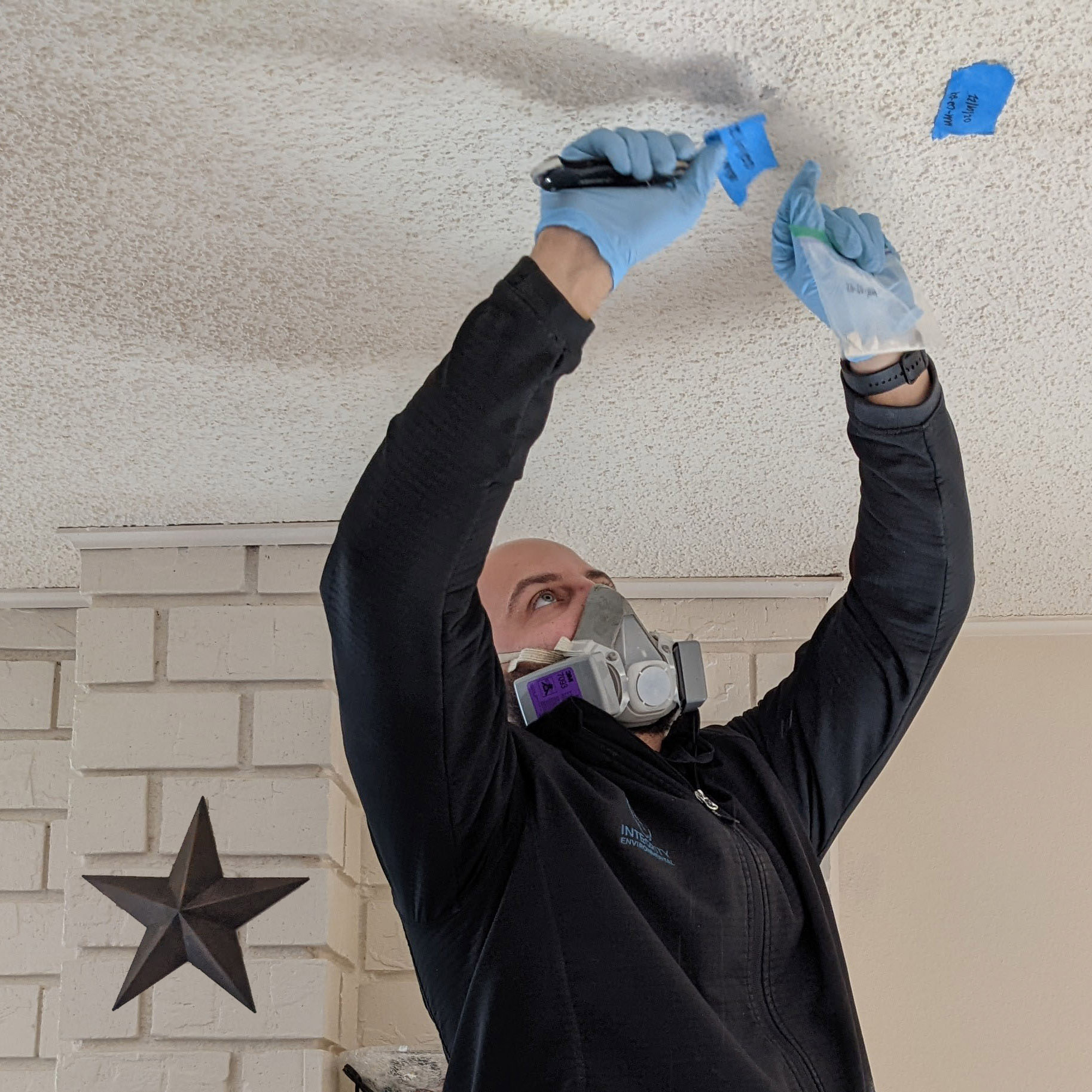
Asbestos Testing is the Law in Colorado
Asbestos may be present, putting your crew and your bottom line at risk!
Asbestos Testing is Required Before Renovations!
It’s the Law! Test for Asbestos-Containing Materials Before You Begin a Remodel Job

It’s the Law to Test for Asbestos.
Asbestos is a known carcinogen and is present in many homes, no matter when they were built. Construction and remodeling contractors must do Asbestos Testing (Bulk Sampling & Spill Delineation).
Asbestos testing is the Law in Colorado. Testing and removal are regulated by the Colorado Department of Public Health and Environment (CDPHE) Regulation 8.

Asbestos puts your crew’s safety at risk.
Protect your crew by identifying asbestos containing materials. Mesothelioma.com explains that there is no safe level of asbestos. Living in a home that is being remodeled is the type of lengthy exposure to asbestos is not considered short-term exposure. Protect your crew from developing cancer or other serious health problems.
Call (833) 837-8427
or

Where Asbestos Lives
Asbestos can be hidden in many places. Sampling and testing is necessary to determine if knocking down a wall or moving a pipe could lead to toxic exposure.
If you Don’t Know – You Must Test.
The most prevalent asbestos-containing materials, once used widely, are:
- popcorn ceiling texture
- dry wall, dry wall mud/texture,
- linoleum,
- heat-resistant fabrics,
- attic and wall insulation,
- roofing shingles,
- hot water pipes coated with asbestos,
4 Steps to Asbestos Safety

1. Identify asbestos-containing materials before work begins.

2. If asbestos is present, proper abatement prevents exposure and safely removes asbestos from your home.

3. Clearance testing verifies your job site is now safe.

4. It’s time to start your remodeling job!
Asbestos Testing in Colorado
Colorado Laws Regarding Asbestos Testing
Just as the local utility company advises property owners to “Call before you dig” to avoid digging into and damaging buried utility lines (gas, electric, cable, phone etc.) The CDPHE Regulation 8 outlines the laws for both homeowners and contractors (restoration, abatement, construction, demolition or remodeling) with regard to asbestos testing in Colorado, disturbing and/or removing materials that may contain asbestos.
Individuals failing to work according to the CDPHE regulations face legal action which may include severe fines.
What About mold?
Should we Test for Mold before renovations?
While it isn’t regulated like asbestos, unchecked mold growth can have a negative effect on your health. The human body is the x-factor, because everyone reacts differently. Mold should be tested in every room to be sure there is not a harmful amount of mold for you to breathe.
When should you test for mold?
- If your residence, commercial property, or building has had a flood, leak, or sewage back-up and third party restoration scope evaluation or clearance documentation is necessary (e.g. related to garment, content, HVAC, and structural contamination),
- If you are experiencing foul, moldy or musty odors,
- If you intend to purchase or lease ANY property,
- If an individual(s) has been diagnosed with a disease or allergies that is or may be associated with a fungal exposure,
- If there is evidence from a visual inspection or bulk sampling that the ventilation system may be contaminated. The purpose of such air monitoring is to assess the extent of contamination throughout a building.
- If the presence of mold is suspected (e.g., musty odors) but cannot be identified by a visual inspection or bulk sampling (e.g., mold growth behind walls),
- To identify specific fungal contaminants as part of a medical evaluation or occupant risk evaluation (e.g. occupants are experiencing symptoms which may be related to fungal exposure),
- To evaluate the levels of airborne contamination:
- Crawl spaces, for example, may have a number of unrelated fungal sources that are not readily observed.
What Do Clients say?

Schedule a Test -or- Get a Free Consultation

CALL ANYTIME!
We’re open from 8am-8pm every day for your environmental testing needs.
